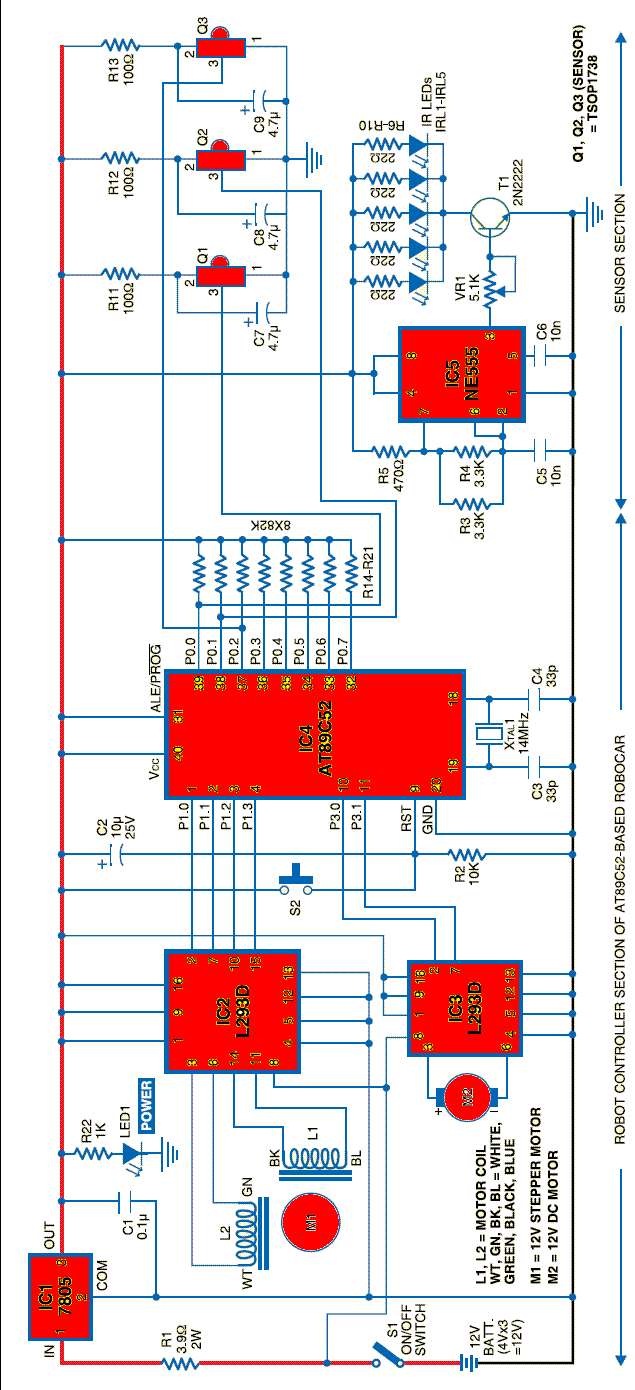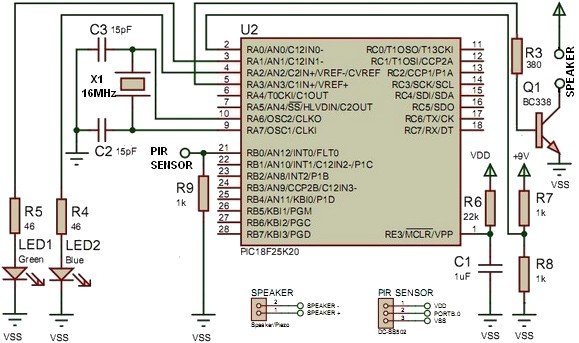
CD4017 IC For Automatic Room Lights Sensor

The following circuit illustrates the CD4017 integrated circuit (IC) used in an automatic room lights sensor circuit diagram. Features include a single light sensor utilizing two light-dependent resistors (LDRs).
The CD4017 is a decade counter IC that can drive multiple outputs based on the input clock signal. In the context of an automatic room lights sensor, the circuit is designed to turn on lights when ambient light levels drop below a certain threshold, indicating that the room is dark.
The circuit typically comprises two LDRs arranged in a voltage divider configuration. As light levels change, the resistance of the LDRs varies, which in turn affects the voltage at the input of a comparator or an operational amplifier. This voltage is compared against a reference voltage to determine whether the lights should be activated.
When the ambient light is sufficient, the output of the comparator remains low, keeping the CD4017 inactive. However, as light levels decrease, the voltage at the comparator input drops below the reference voltage, triggering the comparator output to go high. This high output can be connected to the clock input of the CD4017, which then counts and activates the corresponding output pin connected to the lighting circuit.
The circuit may also include additional components such as resistors and capacitors to stabilize the operation and prevent false triggering due to transient light changes. A relay can be used to control higher voltage lights, ensuring safe operation within the circuit.
In summary, the CD4017-based automatic room lights sensor circuit utilizes LDRs to detect ambient light levels, activating lights automatically when needed, thereby enhancing convenience and energy efficiency.The following circuit shows about CD4017 IC For Automatic Room Lights Sensor Circuit Diagram. Features: has only one light sensor, using two LDRs .. 🔗 External reference
The CD4017 is a decade counter IC that can drive multiple outputs based on the input clock signal. In the context of an automatic room lights sensor, the circuit is designed to turn on lights when ambient light levels drop below a certain threshold, indicating that the room is dark.
The circuit typically comprises two LDRs arranged in a voltage divider configuration. As light levels change, the resistance of the LDRs varies, which in turn affects the voltage at the input of a comparator or an operational amplifier. This voltage is compared against a reference voltage to determine whether the lights should be activated.
When the ambient light is sufficient, the output of the comparator remains low, keeping the CD4017 inactive. However, as light levels decrease, the voltage at the comparator input drops below the reference voltage, triggering the comparator output to go high. This high output can be connected to the clock input of the CD4017, which then counts and activates the corresponding output pin connected to the lighting circuit.
The circuit may also include additional components such as resistors and capacitors to stabilize the operation and prevent false triggering due to transient light changes. A relay can be used to control higher voltage lights, ensuring safe operation within the circuit.
In summary, the CD4017-based automatic room lights sensor circuit utilizes LDRs to detect ambient light levels, activating lights automatically when needed, thereby enhancing convenience and energy efficiency.The following circuit shows about CD4017 IC For Automatic Room Lights Sensor Circuit Diagram. Features: has only one light sensor, using two LDRs .. 🔗 External reference
Warning: include(partials/cookie-banner.php): Failed to open stream: Permission denied in /var/www/html/nextgr/view-circuit.php on line 713
Warning: include(): Failed opening 'partials/cookie-banner.php' for inclusion (include_path='.:/usr/share/php') in /var/www/html/nextgr/view-circuit.php on line 713





